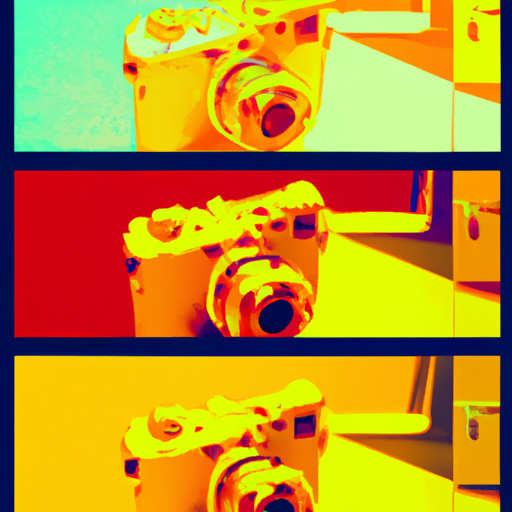
-
Table of Contents
- Unleashing Creativity: Using AI for Design Inspiration
- The Role of AI in Design Inspiration
- Examples of AI in Design Inspiration
- 1. Image Recognition and Analysis
- 2. Natural Language Processing
- 3. Generative Design
- The Benefits of AI for Design Inspiration
- The Future of AI in Design Inspiration
- Conclusion
Unleashing Creativity: Using AI for Design Inspiration

Artificial Intelligence (AI) has revolutionized various industries, from healthcare to finance. However, one area where AI is making significant strides is in the field of design. Designers are now leveraging AI to unlock their creativity and find inspiration in ways that were previously unimaginable. In this article, we will explore how AI is being used for design inspiration, the benefits it offers, and the potential it holds for the future.
The Role of AI in Design Inspiration
Design inspiration is a crucial aspect of the creative process. It helps designers generate new ideas, explore different possibilities, and push the boundaries of their work. Traditionally, designers have relied on various sources for inspiration, such as nature, art, and architecture. While these sources continue to be valuable, AI has emerged as a powerful tool to augment and enhance the creative process.
AI algorithms can analyze vast amounts of data, including images, text, and patterns, to identify trends and generate unique insights. By leveraging AI, designers can tap into a vast repository of information and gain inspiration from sources they may not have considered before. This opens up new avenues for creativity and allows designers to explore uncharted territories.
Examples of AI in Design Inspiration
Let’s explore some specific examples of how AI is being used for design inspiration:
1. Image Recognition and Analysis
AI-powered image recognition algorithms can analyze millions of images to identify patterns, colors, and shapes. Designers can use these algorithms to search for specific visual elements or themes and gain inspiration for their projects. For example, a designer working on a website redesign can use AI to analyze images related to their industry and identify common design patterns used by successful websites.
2. Natural Language Processing
Natural Language Processing (NLP) algorithms enable AI systems to understand and analyze human language. Designers can leverage NLP to search for design inspiration in textual content such as articles, blogs, and social media posts. By analyzing the language used to describe certain design concepts or trends, designers can gain valuable insights and inspiration for their own work.
3. Generative Design
Generative design is an exciting application of AI that allows designers to input specific parameters and let the AI system generate multiple design options. For example, a designer working on a logo can input keywords related to the brand’s identity, and the AI system can generate a range of logo designs based on those keywords. This not only saves time but also provides designers with fresh ideas and inspiration.
The Benefits of AI for Design Inspiration
The use of AI for design inspiration offers several benefits:
- Efficiency: AI algorithms can quickly analyze vast amounts of data, saving designers time and effort in the research phase of their projects.
- Diverse Inspiration: AI can provide designers with inspiration from a wide range of sources, including those they may not have considered before.
- Unbiased Insights: AI algorithms are not influenced by personal biases or subjective opinions, providing designers with objective insights and inspiration.
- Exploration of New Territories: AI can help designers explore new design possibilities and push the boundaries of their work.
The Future of AI in Design Inspiration
The potential of AI in design inspiration is vast and continues to evolve. As AI algorithms become more sophisticated and capable of understanding complex design concepts, designers will have access to even more powerful tools for inspiration. Here are some potential future developments:
- Personalized Inspiration: AI systems could learn from a designer’s previous work and preferences to provide personalized design inspiration tailored to their unique style.
- Collaborative Design: AI could facilitate collaboration between designers by analyzing their individual styles and suggesting ways to merge their ideas, leading to innovative and collaborative design solutions.
- Real-time Inspiration: AI systems could continuously monitor design trends, user feedback, and market data to provide designers with real-time inspiration and insights.
Conclusion
AI is transforming the way designers find inspiration and unleash their creativity. By leveraging AI algorithms for image recognition, natural language processing, and generative design, designers can access a vast repository of information and gain inspiration from diverse sources. The benefits of using AI for design inspiration include efficiency, diverse inspiration, unbiased insights, and the exploration of new design territories. As AI continues to advance, the future holds even more exciting possibilities, such as personalized inspiration, collaborative design, and real-time insights. Designers who embrace AI as a tool for inspiration will be at the forefront of innovation and creativity in the design industry.
